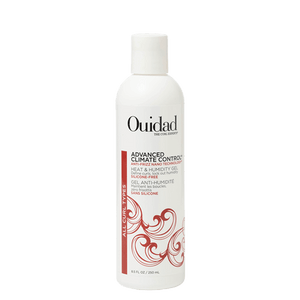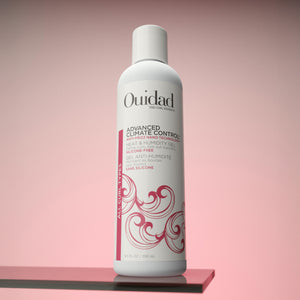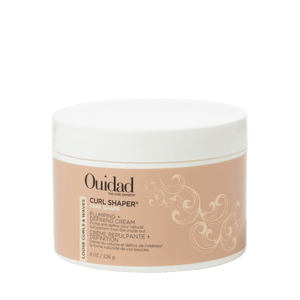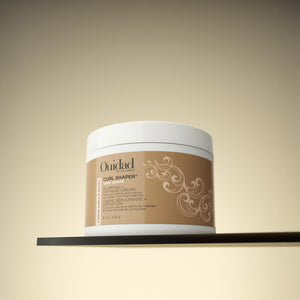Chances are you've heard of plopping-but what exactly does it mean, you wonder? The go-to practice for so many curly girls might be something worth adding to your styling routine. The result? Beautiful bouncy coils, defined (and frizz-free) fresh off of wash day. It’s a simple drying technique many curlies swear by to help encourage definition and reduce frizz—fresh off wash day. If you’re curl-curious about trying it, here’s how it works, who it can help, and how to fit it into your routine.
So, What Exactly is Plopping?
Hair plopping is a technique used to dry curls while keeping them defined and intact. First, apply your usual styling products when hair is clean and damp. Then, simply lay a t-shirt or a soft towel (microfiber preferably) on a flat surface, flip your head upside down and plop your hair onto the towel, wrapping any excess fabric around the nape of your neck to secure. Once you have your towel or T-shirt secured, let hair dry (30 minutes to an hour depending on your hair type) before removing.
Plopping gathers curls into a soft fabric “bundle” so they can set in their natural pattern while excess water is absorbed. Because you’re not rubbing with a bath towel, you minimize friction, which can help reduce frizz and keep definition intact as hair begins to dry.
Your Step By Step Guide:
-
Cleanse & condition: wash and detangle gently while conditioning; rinse.
-
Apply stylers on damp hair: on damp, not dripping, hair, smooth in your go-to stylers from roots to ends.
-
Prepare your fabric: lay a microfiber towel or soft cotton T-shirt on a flat surface.
-
Flip & place: flip your head so curls land centered on the fabric in their natural pattern.
-
Wrap & secure: bring the back edge to your nape, then cross/tuck the sides so it’s snug (not tight).
-
Time it: leave on for ~30–60 minutes. Adjust based on density and curl type.
-
Unwrap gently: peel fabric back slowly; avoid tugging.
-
Finish drying: air-dry or diffuse to set your shape.
Hair is most fragile right after washing. Plopping reduces movement and friction at that moment, so curls can form and set with less disruption. The fabric also wicks excess water, which can help shorten overall dry time, especially before diffusing.
Does It Work?
The curly girls on TikTok seem to think so! While this tried-and-true technique is not new, the trend has hit social media by storm-likely because so many of us have been experimenting with new ways to style our hair at home (thanks, quarantine!). But, it's not just a fun way to look cute on wash day, though there's that, too. Plopping removes dampness from curls without using any friction caused by the rubbing motion of a traditional towel that can induce frizz.
The curly girls love it because it lets curls begin drying without disturbance. By avoiding rubbing, you help reduce frizz and encourage definition

The Types of Curls That Benefit The Most
-
Loose waves to classic curls that stretch easily when wet—plopping helps them spring up.
-
Tighter curls & coils that need protection while the pattern sets.
-
High-density hair—pre-drying removes excess water before air-drying or diffusing.
-
Frizz-prone textures—less friction at the most delicate stage can help keep frizz at bay.
If you already love air-drying without plopping, keep doing what works. Consider plopping when you want extra definition on wash day or you plan to diffuse and want to remove some water first.
Tip: a T-shirt works in a pinch if you don’t have a microfiber towel.
Common mistakes (and easy fixes)
-
Leaving it on too long: start with 30–45 minutes; if ends feel too dry to shape, shorten the time.
-
Starting sopping-wet: blot gently first so stylers can grip and the fabric can wick water effectively.
-
Rubbing or twisting: place curls and wrap—skip rubbing to avoid frizz.
-
Unwrapping fast: peel back slowly so you don’t disturb the pattern you set.
-
Flat roots: after unwrapping, clip at the root or hover-diffuse for a few minutes before air-drying.
Troubleshooting:
“My ends look frizzy.” Smooth a touch more styler through ends before plopping; hands off while drying.
“My curls look stretched.” Shorten plop time so the bundle doesn’t weigh hair down.
“I don’t see any more definition.” Apply stylers evenly on damp hair; unwrap slowly; finish with a diffuser if you want more hold.
Let's Talk Products
So, now you're ready to get started on your plopping journey-but what products should you use? Because you won't be adding much more product once you're done plopping (your hair will still be slightly damp when you remove the towel, so you can either let it air-dry or diffuse it), you want to stick to products that pack in a lot of moisture. Advanced Climate Control Heat and Humidity Gel works great for styling all hair types before plopping and if you need something a little more lightweight the new Curl Shaper Take Shape Plumping + Defining Cream will definitely get the job done without weighing down your curls or loose waves.
You won’t add much product after you unwrap, so load moisture and definition before you plop:
-
Advanced Climate Control® Heat & Humidity Gel: a go-to styler for all curl types before plopping to help lock in definition.
-
Curl Shaper™ Take Shape Plumping + Defining Cream: a lightweight option that defines without weighing down curls or loose waves.
After you unwrap either let hair air-dry the rest of the way or finish with a diffuser, whichever you prefer.
Where This Fits In Your Routine
Plop while you do skincare or breakfast, then unwrap and air-dry; or use plopping as a pre-dry step to make diffusing feel faster. For special-occasion hair, plop briefly to set the curl pattern, then diffuse to your preferred level of hold and volume.
FAQs
How long should I plop?
About 30–60 minutes is a good starting range; adjust to your density and pattern.
Do I need special tools?
Nope! A microfiber towel or soft cotton T-shirt works
Is it only for certain curl types?
Plopping can be helpful from waves to coils because it reduces friction and disturbance while curls set.





